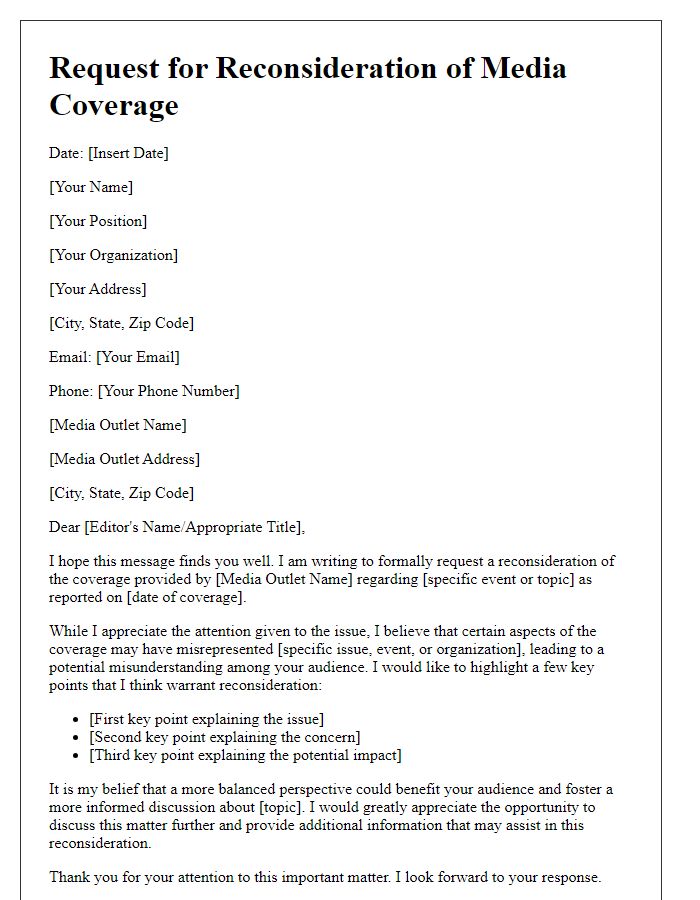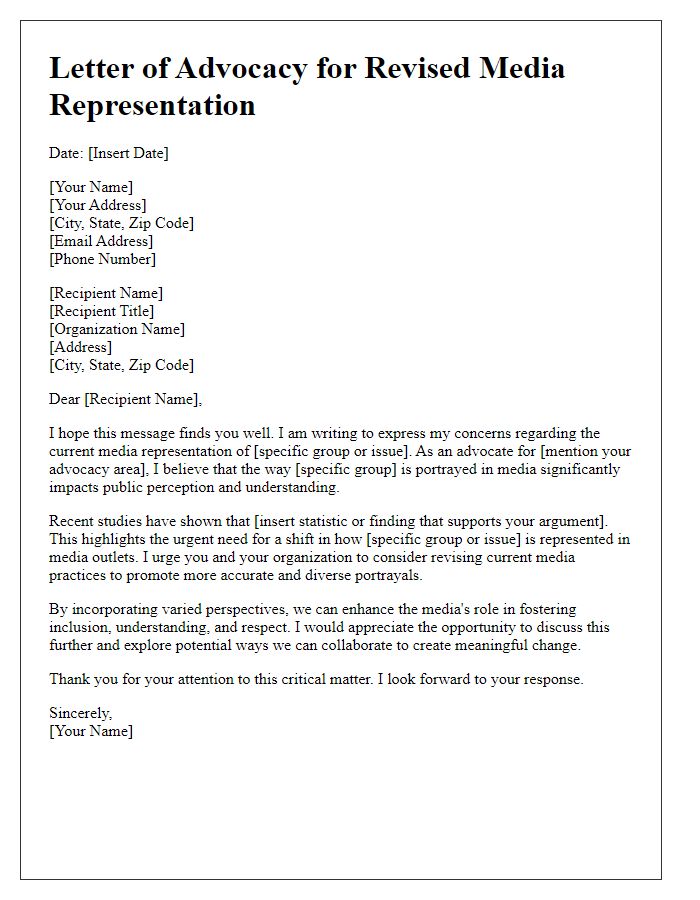Writing an effective appeal for media coverage decisions can be challenging, but it's vital to express your thoughts clearly and persuasively. A well-crafted letter not only highlights your points but also engages the recipient in a meaningful way. By using a conversational tone, you can make your appeal more relatable and impactful. Dive into the nuances of crafting your letter and discover tips that will enhance your chances of gaining the coverage you seekâread on to uncover more insights!

Persuasive Language
Media coverage decisions significantly influence public perception and awareness. Various factors such as societal relevance, audience engagement, and community impact play essential roles in determining the stories that receive attention. Notably, significant events like the response to natural disasters (e.g., Hurricane Katrina in 2005) or pivotal moments in social movements (e.g., Black Lives Matter protests in 2020) often highlight the necessity for comprehensive reporting. Regional outlets, such as local newspapers, frequently address stories that resonate more closely with specific communities, impacting local discussions. Additionally, the advent of social media platforms, such as Twitter and Facebook, has reshaped how journalists and media organizations prioritize their coverage, leading to an emphasis on trending narratives. Maximizing media coverage decisions involves understanding these dynamics and crafting compelling narratives that reflect the values and concerns of the intended audience.
Clear Objective
Media coverage decisions can significantly impact public perception and awareness of critical events, issues, or organizations. An appeal for better media representation should clearly outline the specific objective, such as increasing awareness of a charity event in New York City that aims to raise funds for homeless shelters. Highlight the significant statistics around homelessness in NYC, with over 60,000 individuals reported to be without shelter, to emphasize the urgency of the situation. Include information about the event date, participation opportunities, and potential partnerships with local businesses that can amplify the reach and effectiveness. Additionally, point out the potential consequences of insufficient coverage, such as the lack of support for the nonprofit organizations involved, which rely heavily on public engagement to sustain their operations and support vulnerable populations.
Target Audience Alignment
Media outlets often strive for audience alignment, ensuring that the content resonates with their viewership. In the dynamic landscape of journalism, understanding demographics is paramount; for instance, a publication like The New York Times caters to a readership interested in in-depth analysis and current events, while BuzzFeed attracts a younger, more casual audience seeking entertainment and trends. Factors such as geographic location influence audience preferences; for example, local news stations focus on community events and issues pertinent to their specific regions. Brands also leverage target audience alignment in campaigns; for example, Nike significantly tailors advertising to engage with sports enthusiasts, women, and fashion-forward consumers. Adapting messaging and channels to align with distinct audience segments enables stronger connections and enhances overall media effectiveness.
Compelling Narrative
Compelling narratives often emerge from impactful events that showcase resilience and community spirit, such as the devastating hurricane in New Orleans, which left over 1,800 individuals dead and displaced thousands more in August 2005. Coverage highlights stories of local heroes, such as volunteers from the Cajun Navy, who risked their lives to rescue stranded residents, illustrating powerful themes of humanity amidst disaster. Media outlets play a crucial role in amplifying these narratives, connecting audiences to the emotional struggles faced by affected families and showcasing efforts of relief organizations like the Red Cross, which provided shelter for thousands. Engaging storytelling through various mediums--print, television, and social media--can ensure that lessons learned are shared widely, promoting awareness for future disaster preparedness and response initiatives.
Strong Supporting Evidence
Appealing media coverage decisions requires strong supporting evidence to substantiate claims. Extensive analysis of similar cases, such as the 2020 coverage discrepancies in the U.S. Presidential election, demonstrates the significant impact of media representation on public perception. Utilizing metrics, like audience reach statistics and social media engagement rates, can highlight the disparity in coverage between different events or issues. Nominal examples, including scholarly research publications from institutions such as Harvard University, provide validation for claims of bias or underrepresentation in media narratives. Citing trends from the Pew Research Center's reports on public trust in media can further reinforce arguments for reevaluation of coverage decisions.













Comments